I also found myself breathless from the beauty of Otavalo both in the territory around Otavalo, the beautiful cobbled streets and beautiful buildings and the warm and friendly people who were mostly indigenous who predated the Incas.
This is my guide, Sisa, who toured me to the surrounding craft villages and natural scenery at the Cascadas de Peguche.
It is always a challenge crossing country borders, and I found that going from Colombia to Ecuador fairly easy. From Pasto, I caught a collectivo to Ipiales, Colombia and then another one to the border town of Rumichaca and another collectivo to the border. I then walked first to the Colombia Immigration to stamp my way out of the country. I then walked a few hundred feet to the Ecuador border where I filled out the normal immigration paperwork which was reviewed and then my entry immigration stamp was added to my passport.
Colombia Immigration Office
Walk to Ecuador Immigration Office
Ecuador Immigration Office
Quite a challenging road through the mountains on the way to Otavalo.
In Ecuador, the currency is the US Dollar with the coins being a combination of Ecuador currency that matches the US coins. I immediately realized that almost all of the $1.00s in Ecuador were the US $1 coin with either John Adams or Sacagewa imprinted on these coins. How amazing is that that the $1 USD coin is such a success here, but a failure in the US.
I couldn't help buying a new man bag to replace my Sapa, Vietnam bag. With a bit of negotiating, I got it for $3 off at $12. It is a bit roomier and I like the design.
Lots of hammocks.
Lace tablecloths and fancy hats for sale.
These indigenous people are the most financially successful business people of all indigenous people in all of Ecuador.
Following the Pancho Plaza visit, I headed to the public market where meats, fruits, vegetables, and other goods were sold. They also had food stalls where you could have cheap local meals if you could get over the smiling pig.
Chickens by the truckload.
Here are some of the sights in Otavalo beginning with Plaza Bolivar where the government building a Catholic church are located and was the site of the Inti Raymi festival that I just missed.
Another Catholic Church near Morales Calle.
We first stopped at a woven grass mat craft shop where a couple of young girls tried to show me how to make these mats. Sisa said it takes them about 4 hours to make these mats that use the reeds they gather from around the nearby Laguna de San Pablo. I tried my hand at mat weaving, but no way could I make one in 4 hours---more like 4 days.
We next went to the textile weaving "factory". This was next to Sisa's home and her father, sister, and brother were busy weaving when I got there.
Sisa, my guide, is picking out the different colored threads to use on the loom.
Her father is busy making a woven belt
Her sister is on another loom making another patterned woven strip. Sisa told me some friends of hers did the artwork found on all of the walls.
We next stopped at the popular waterfalls called Cascada de Peguche.
Here is the challenging bridge over the river.
We next went to the very affluent village of Cotacahi where the finest leather work was on display in the elegant stores in this village. Sisa told me that this village was a very popular place for ex-pats to live in.
Here is the town square with the church where they were having a funeral celebration.
Our final stop was at the Laguna de Cuicocha which is a water-filled caldera similar but smaller than Crater Lake in Oregon. The water was very clear and pure. Apparently, no fish can survive here because there is no shoreline for them to lay their eggs. They offer boat rides around the small island in the middle of the lake.
That was the finish of my wonderful tour around Otavalo with Sisa and Edwin. Once back at the Rincon del Viajero I took a last relaxing rest in a hammock near their rooftop restaurant.
Subscribe to my YouTube Channel
I have recently uploaded all of my travel videos to YouTube now that they allow longer uploads. I have also added other shorter travel videos.
That link is https://www.youtube.com/c/huntforgold
If you do go there, please subscribe to my video channel since it will help me eventually get some income there and help with my future travels.
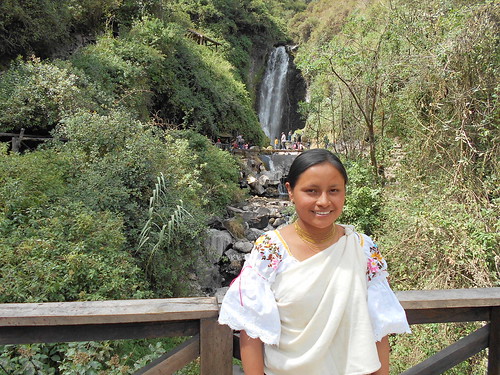

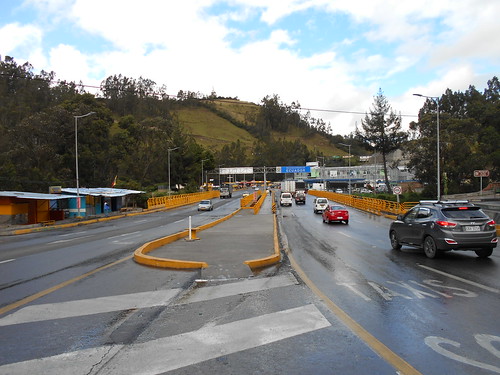
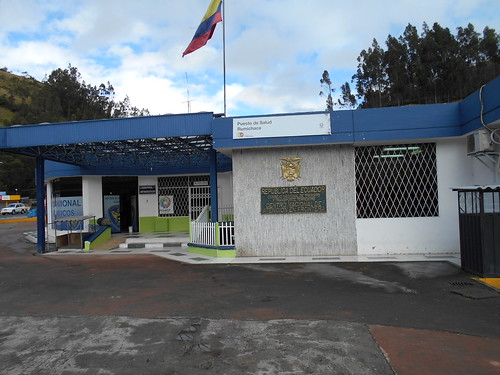
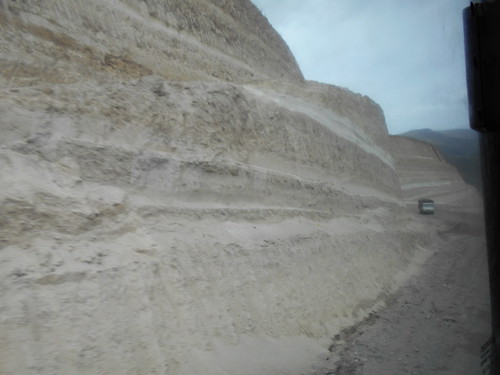
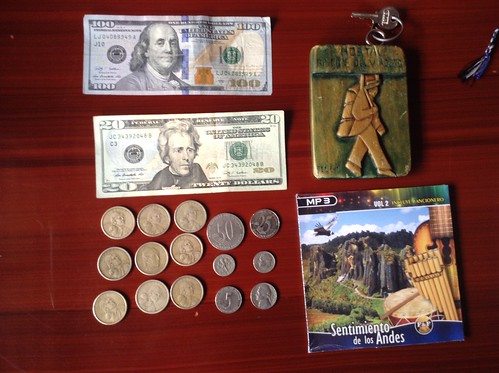
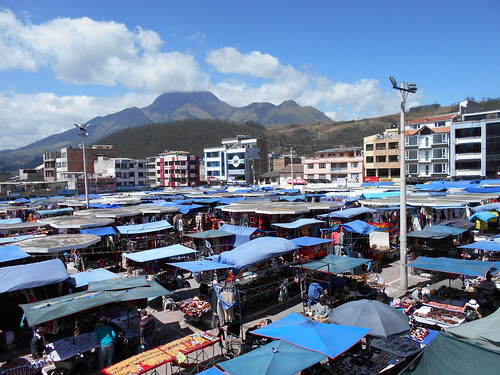
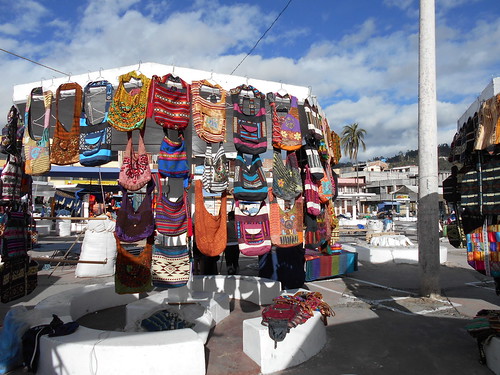
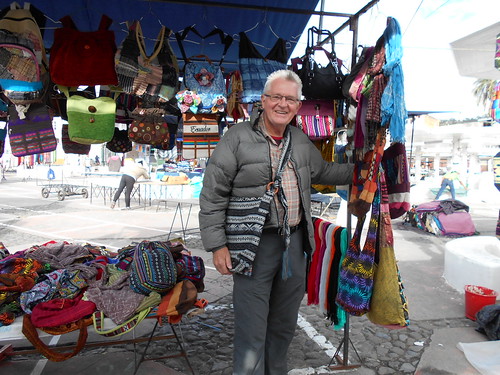
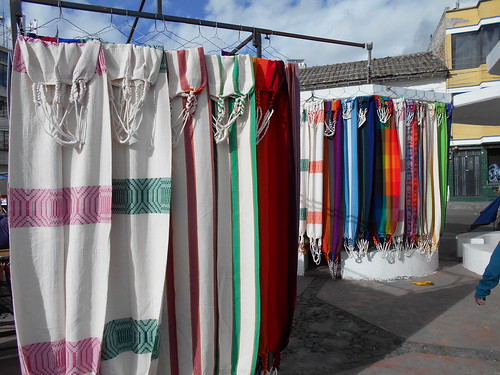


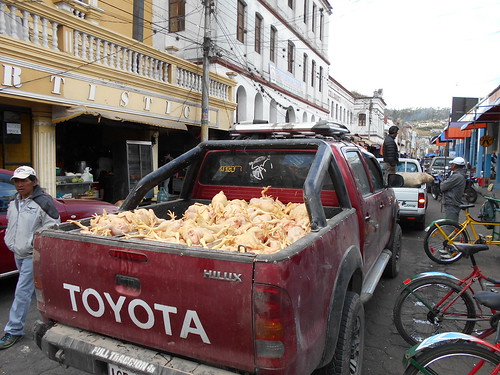

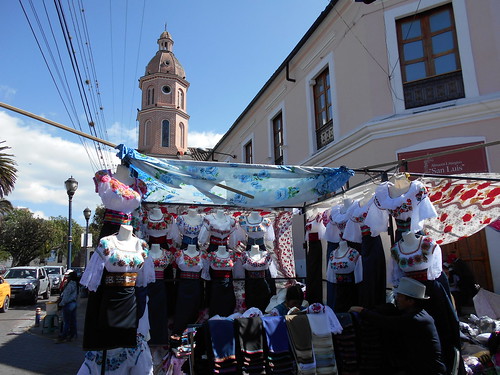
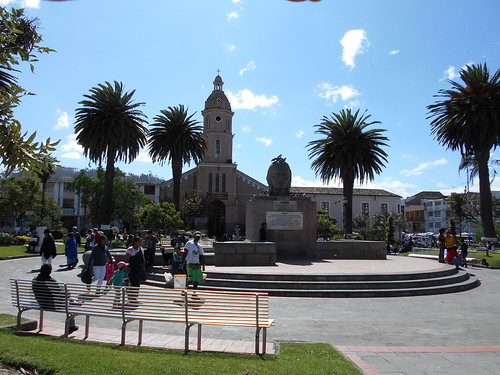
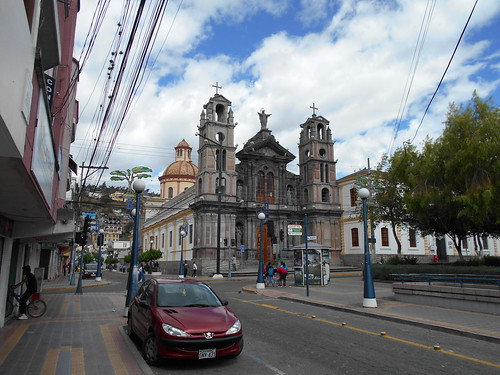

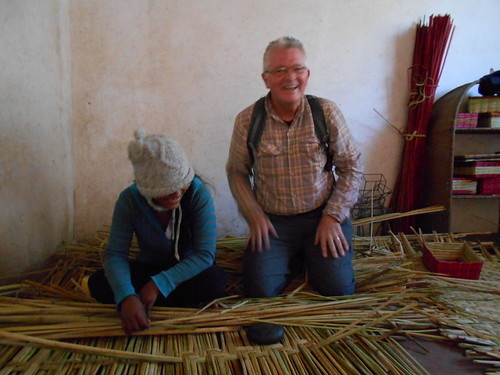

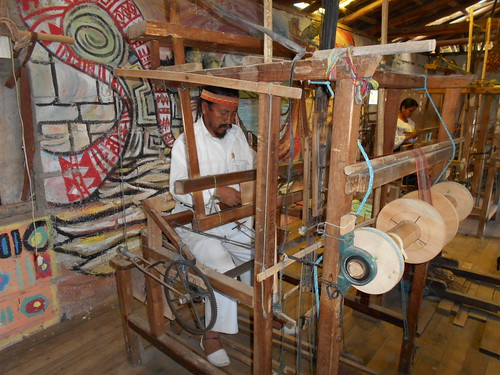



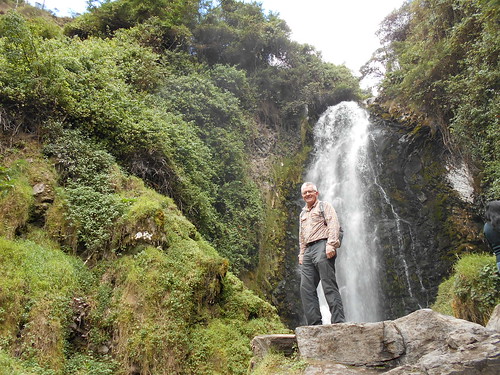
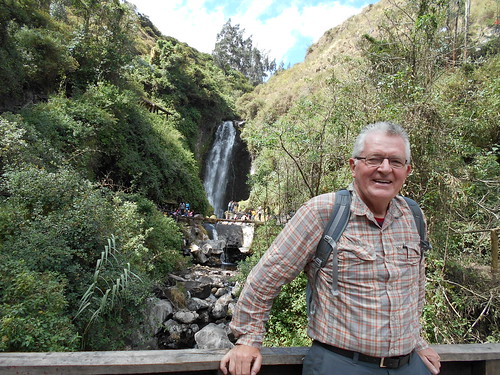
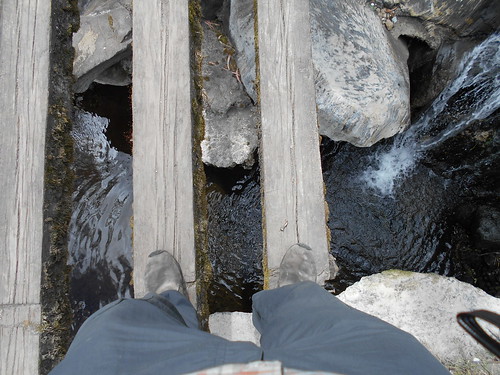
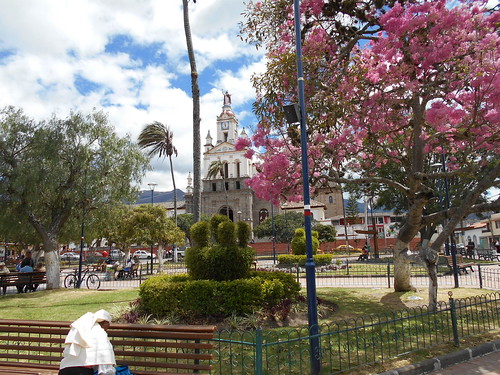

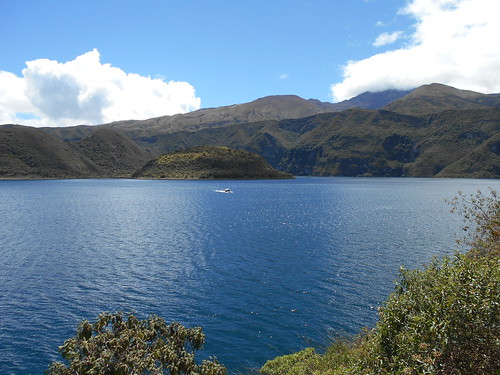

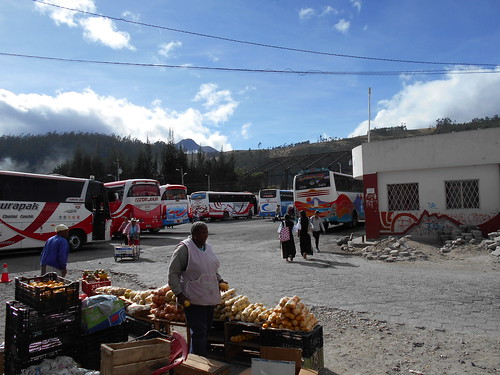
No comments:
Post a Comment